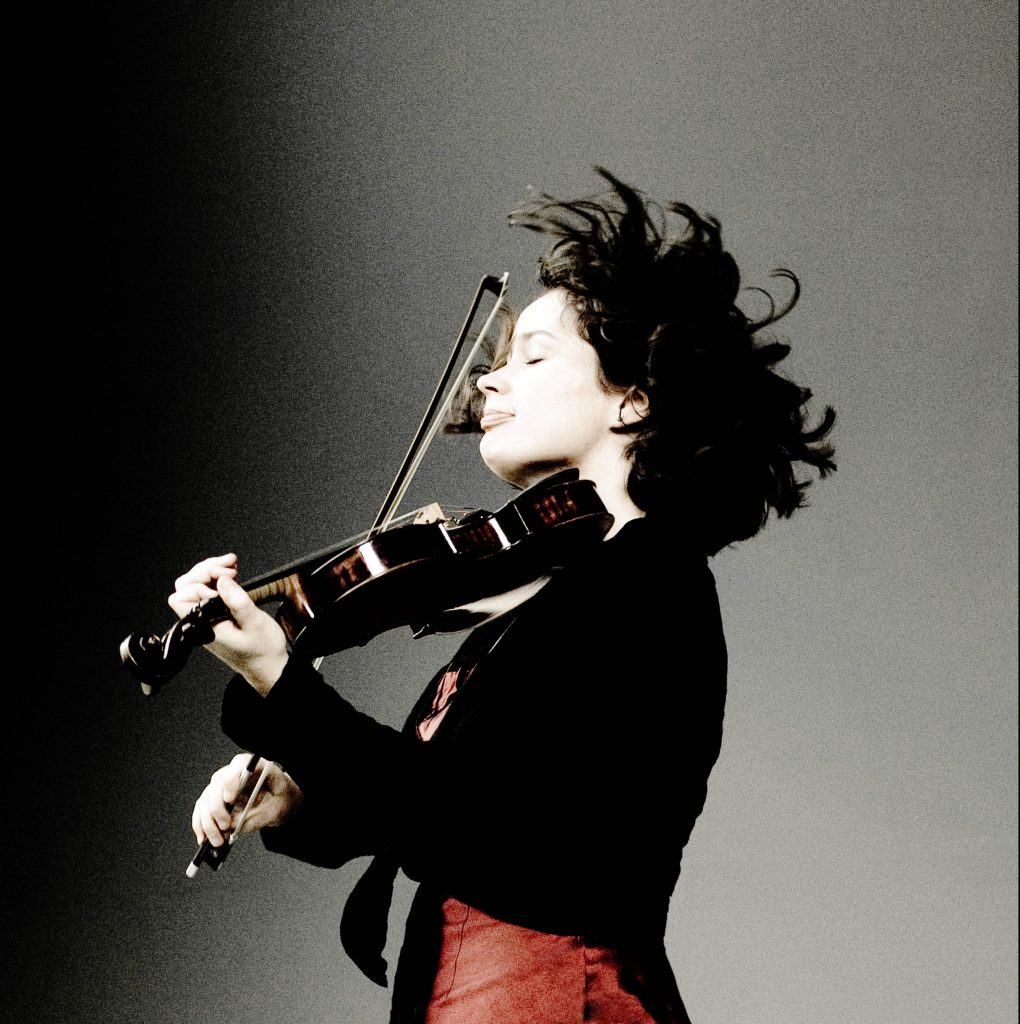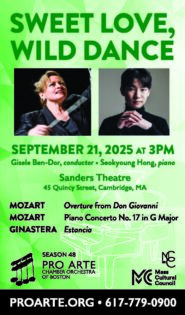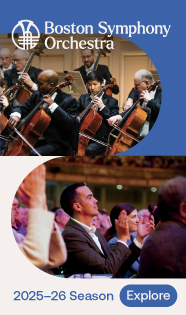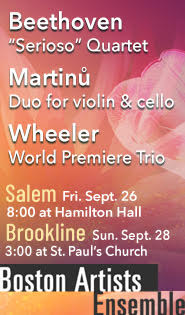A take-notice Celebrity Series debut by string duo Kopatchinskaja and Campbell

Violinist Patricia Kopatchinskaja and cellist Jay Campbell made their local recital debuts in a joint concert Thursday night at Pickman Hall. Their Celebrity Series appearance promised sparks: the Moldavian fiddler is known for a no-holds-barred approach to performing and in Campbell, a member of the JACK Quartet and contemporary music specialist, has a kindred musical spirit.
The two lived up to expectations. Their program was a conspicuously intelligent one, built around a pair of big, early-20th century pieces: Maurice Ravel’s Sonata for Violin and Cello and Zoltán Kodály’s Duo for Violin and Cello. Each was prefaced by a set of short works, drawn from repertory ancient and modern — and all stirringly executed — that established a sort of contextual dialogue between the larger scores.
Preceding the Ravel were an 11th century “Alleluia” adapted from the Winchester Troper, two of Jörg Widmann’s 24 Duos from 2008, and the lean, rustic textures of 17th century composer Orlando Gibbons’ Fantasia a due, no. 4.
The “Alleluia” and Fantasia offered a mix of delicate lyricism and flexible phrasing. Widmann’s Duos (“Valse bavaroise” and “Toccatina all’inglese”) were essentially irreverent but charming caricatures that perfectly suited Kopatchinskaja’s and Campbell’s theatrical style of playing.
Before the Kodály were Iannis Xenakis’ Dhipli Zyia from 1952,14th century composer Guillaume de Machaut’s Ballade 4: Biauté qui, and György Ligeti’s Hommage à Hilding Rosenberg from 1982.
Xenakis’ short, early essay continued in the slashing, rhythmically vigorous vein of the Widmann Duos. Meanwhile, the Machaut transcription, with its plaintive melodic lines and rather free treatment of dissonance, came across as one of the night’s most contemporary-sounding selections. Ligeti’s dense and chromatic Hommage, on the other hand, offered moments of surprising diatonic release.
Kodály’s 1914 Duo lacked the concision of the preceding Ligeti but brimmed with gestures drawn from Kodály’s studies of Eastern European folk traditions. Thursday’s performance emphasized many of the piece’s best qualities.
Kopatchinskaja and Campbell brought a big, bold tone to the first movement’s opening gestures. Throughout, their articulations of shared, exchanged figures were smartly matched and balances carefully calibrated.
They drew out the nuances in Kodály’s second movement with wispy lyrical phrases, and concluded it with searing violin double-stops. For the finale, the pair emphasized the music’s dynamic extremes, tonal range and gypsy flavor. It was a rustic and soulful performance — but one that proved a bit structurally shaky, with the duettists sometimes tunnel-visioned on gestural and tonal details at the expense of the musical line and overall compositional arc.
Formal coherence was less of an issue in Ravel’s 1922 score, which featured a similar interpretive approach but, thanks to the composer’s breviloquence, offered the players less room for diversion.
The Sonata’s first movement had an almost improved feel: It sang with a mix of delicate, ethereal lines and impassioned climaxes. During the second, the duo emphasized the music’s earthy characteristics, particularly its thudding pizzicatos, driving rhythms and gritty melodic figurations.
Campbell drew out the opening of the third movement with a pure, intense tone, while the finale served as a study in percussive string gestures and coloristic contrasts.
As an encore, the pair offered a charming pizzicatorendition of a short duet by C.P.E. Bach. Somehow it all fit together: a thousand years of music from disparate styles and traditions coming together in an ingratiating, thoughtful, and strikingly lucid conversation with itself.
The program repeats 8 p.m. on Friday at Pickman Hall. celebrityseries.org; 617-482-6661
Posted in Performances


